Hearing Aid Overview
Hearing Aid Features
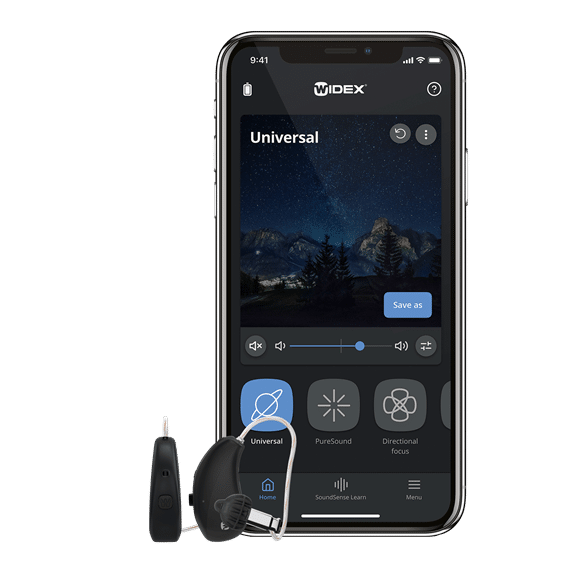
Bluetooth Connectivity
Bluetooth connectivity is one of the most beneficial technologies that is quickly becoming a standard feature of hearing aid models. This feature allows the user to connect to other Bluetooth-enabled devices, like smartphones or tablets, to stream audio directly to their hearing aid. This allows people to stream music, podcasts, and other audio content conveniently without the hassle and mobility restrictions of cords and wires. Bluetooth connectivity also allows hearing aid users to take advantage of various hearing aid apps, which can provide hands-free control over their device settings and personalization of their listening experience. Bluetooth connectivity is not required to use hearing aids successfully but it can enhance the experience.
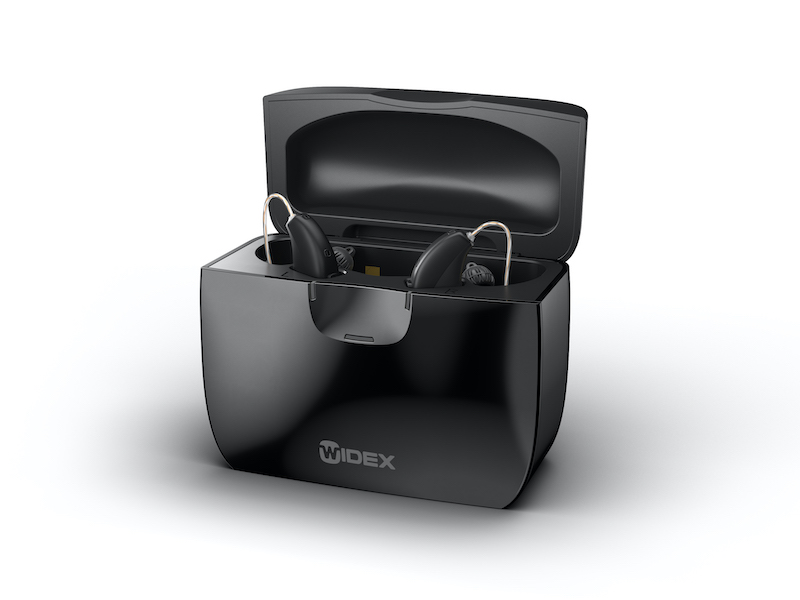
Rechargeable Batteries
Like Bluetooth technology, rechargeable batteries provide an unimaginable level of convenience and are becoming a highly requested feature of hearing aids. As battery technology improves, rechargeable lithium-ion batteries are becoming a more efficient and reliable power source than traditional disposable zinc-air button batteries. Most importantly, they eliminate the constant need to purchase and replace disposable ones. In addition to being environmentally friendly, rechargeable batteries now offer more convenience with easy-to-use chargers.

App Connectivity
Many hearing aids available have free apps that allow you to use your phone as a remote control. With this added control, the app allows you to make volume adjustments, create and access manual settings and sound equalizer modifications. Some apps even use artificial intelligence and machine learning components to learn from your adjustments to be smarter devices over time by providing firmware updates to the hearing aids with valuable updates to the hearing aids. As part of the hearing aid fitting & education process, we will help you to connect your hearing aids to your phone and teach you how to use these advanced benefits.
Request an Appointment
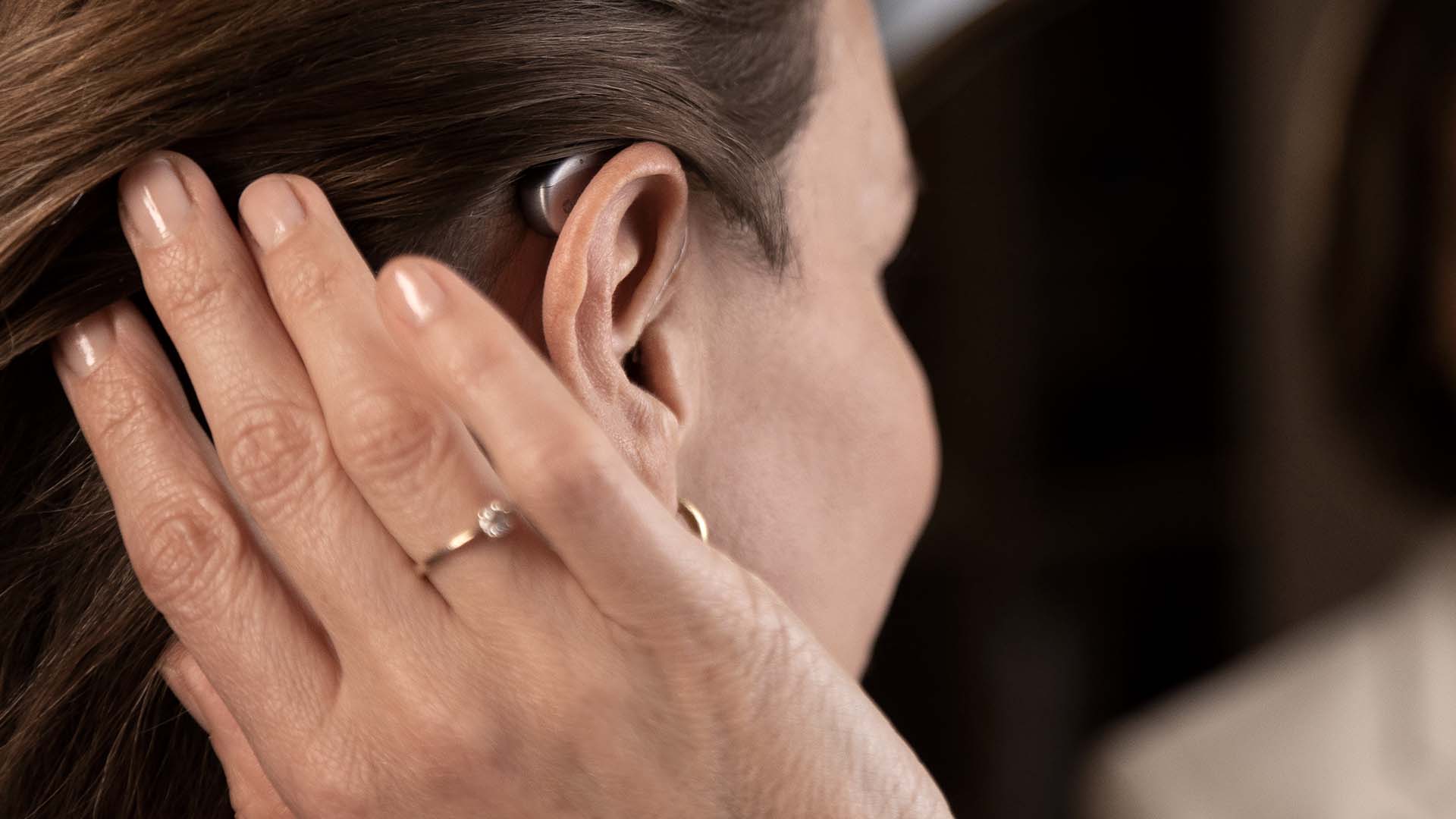
Feedback Cancellation
Feedback cancellation is an important feature that is often overlooked. It helps to reduce or prevent the loud whistling and screeching sounds induced by feedback loops between the microphone and speaker in the hearing aid. This technology also helps to improve the clarity and quality of sounds, as it acts as a frequency filter. Feedback cancellation is especially crucial for those with types of hearing loss that intensify the sudden outbursts of feedback noise. Most importantly, it allows people to enjoy smooth, uninterrupted listening experiences and activities.

Digital Signal Processing (DSP)
Digital Signal Processing is a technology that utilizes computer algorithms to manipulate and analyze sound. It is a vital component of modern hearing aids and allows for the hearing aids to be programmed using your personal hearing threshold levels. DSP enables other hearing aid features, such as noise reduction and feedback cancellation, allowing users to hear more clearly in noisy environments. It also plays a significant role in sound amplification, allowing hearing aids to recognize and adjust to sound levels in different environments automatically. Furthermore, DSP can selectively emphasize different frequencies, allowing users to enhance certain sounds while dampening others, providing optimal listening experiences in both noisy and quiet environments.

Tinnitus Therapy
More than 50 million Americans experience tinnitus, which is approximately 15% of the US population. Tinnitus, along with hearing loss, is important to evaluate and treat. We are able to treat tinnitus with or without the presence of a hearing loss. Devices have various treatment strategies to support in managing tinnitus. Tinnitus masking is a feature that helps reduce or eliminate the perception of tinnitus by producing a low-level background or white noise. It works by concealing the ringing sound that is associated with tinnitus with other, more pleasant sounds, which can be adjusted according to the user's needs and preferences. Depending on the hearing aid, these sounds can come in the form of white noise, nature sounds, or even music. Tinnitus masking is a very simple and effective tool for managing tinnitus and can help reduce stress and anxiety while also improving sleep, leading to an enhanced overall quality of life.
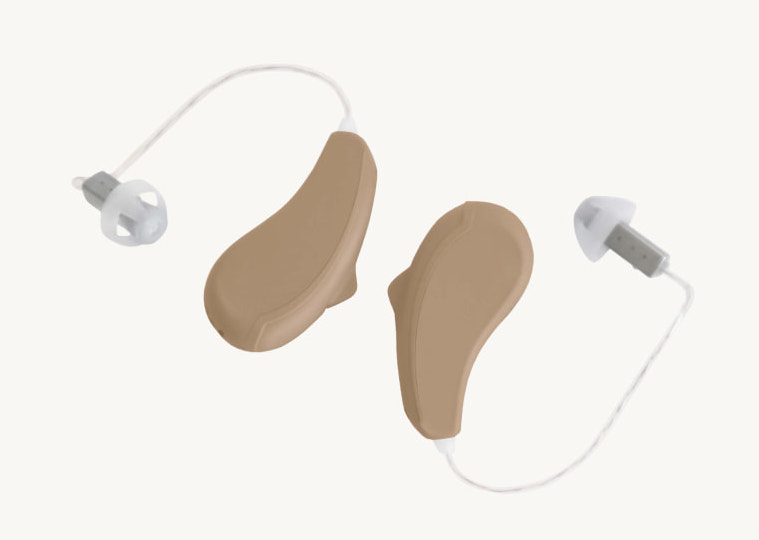
Over-the-Counter Hearing Aids
You may have started to hear about hearing aids that are now available over-the-counter. We have access to offer these products in our clinic and we are knowledgeable to discuss the options available. It is important to receive individual care for your hearing. When you make an appointment at our office, you will have a private session where we will assess your hearing and discuss your hearing needs. Our audiologists can discuss the pros and cons of OTC hearing aids and we are prepared to guide you in that process.
Hearing Aid Styles

Invisible-In-Canal (IIC)
Invisible-in-canal (IIC) hearing aids are the smallest type of hearing aid and are nearly invisible when worn in the ear. They are custom-made to fit the unique shape and size of the user's ear canal, requiring molds or impressions to be taken during the fitting process. IICs are designed to sit the farthest inside the ear canal, which maximizes their discreteness. Due to their custom-fitted nature, they offer not only superior comfort but also provide excellent sound quality. Additionally, IICs are designed to be water-resistant and can be worn in many different situations. However, their minuteness comes with limitations. IICs use the smallest batteries that have the shortest lifespans and weakest power outputs, making them only suitable for those with mild to moderate hearing loss. They can also be difficult for those with poor manual dexterity to handle. Furthermore, the number of extra features IICs can offer is restricted, while onboard controls are nonexistent.
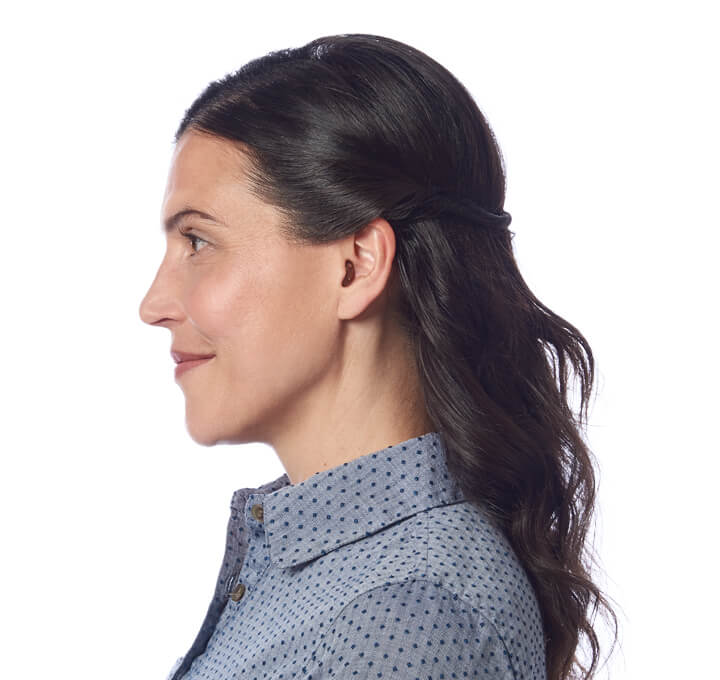
Completely-In-Canal (CIC)
Like IICs, Completely-in-canal hearing aids are custom-made to fit entirely within the user's ear canal. However, they are just slightly larger and don't sit as deep in the ear as IICs, yet they are still relatively invisible to others when worn. CICs require molds of the ear to provide a precise fit, which enhances comfort and sound quality. However, like IICs, their drawbacks also include shorter battery life and power, limited features and nonexistent onboard controls, and difficult handling. They are an unrivaled choice, though, for those with mild to moderate hearing loss who are looking for ultimate discreteness, comfort, and sound quality.

In-The-Canal (ITC)
In-the-canal hearing aids are larger than both IICs and CICs and usually sit flush with the opening of the ear canal. These devices are also custom-made to fit the user's ear anatomy and require molds or impressions to function properly. Though they are much more visible than IICs and CICs, ITC hearing aids are still more difficult to spot than many other devices while offering unparalleled comfort and audio quality. Their larger size allows the use of larger batteries with longer lifespans and power outputs, making them suitable for slightly more severe types of hearing impairment. Additionally, ITCs can host more extra features and have some limited onboard controls. At the expense of invisibility, they are great devices that offer a bit more versatility and functionality.

In-The-Ear (ITE)
Out of all the types of hearing aids that are designed to reside within the ear, In-the-ear hearing aids are the largest. In contrast to the other three types, which all rest completely or mostly within the ear canal, ITEs are designed to sit in the bowl-like cavity just outside the opening of the ear canal. They are available in two variations - full shell or half shell - which occupy different levels of space in the aural cavity. As these devices are also tailor-made to conform to the user's ear, they offer great sound quality and comfort. However, being significantly larger, ITEs have the benefits of extended battery life, greater power output, and ease of handling, and are effective in treating a wide range of hearing loss severities. They are also able to host numerous extra features successfully while providing many onboard controls, such as volume wheels and mode selection buttons. Yet, their size and external placement make them very visible and detectable.

Receiver-In-Canal (RIC)
Receiver-in-canal (RIC) hearing aids are a type of behind-the-ear (BTE) hearing aid that has a slimmer, more compact profile than its original counterpart and is designed to be less visible. Structurally speaking, they are practically identical, as both devices are worn behind the ear with a thin clear tube running over the ear and connecting to an earpiece or dome that rests in the opening of the ear canal. Though both types consist of three main parts - an amplifier, microphone, and speaker - the location of these components differ. With RICs, the mic is housed inside the dome earpiece along with the speaker, which allows them to produce more realistic, natural sounds. Additionally, individual components of RICs are detachable and can be replaced separately, eliminating the need to replace the entire device in case of critical malfunctions or damage. Though they are smaller and more discreet than BTEs, RICs have good battery life and power output. They are very effective in treating most types of hearing loss, offering many extra features and onboard controls, and are very easy to manage.
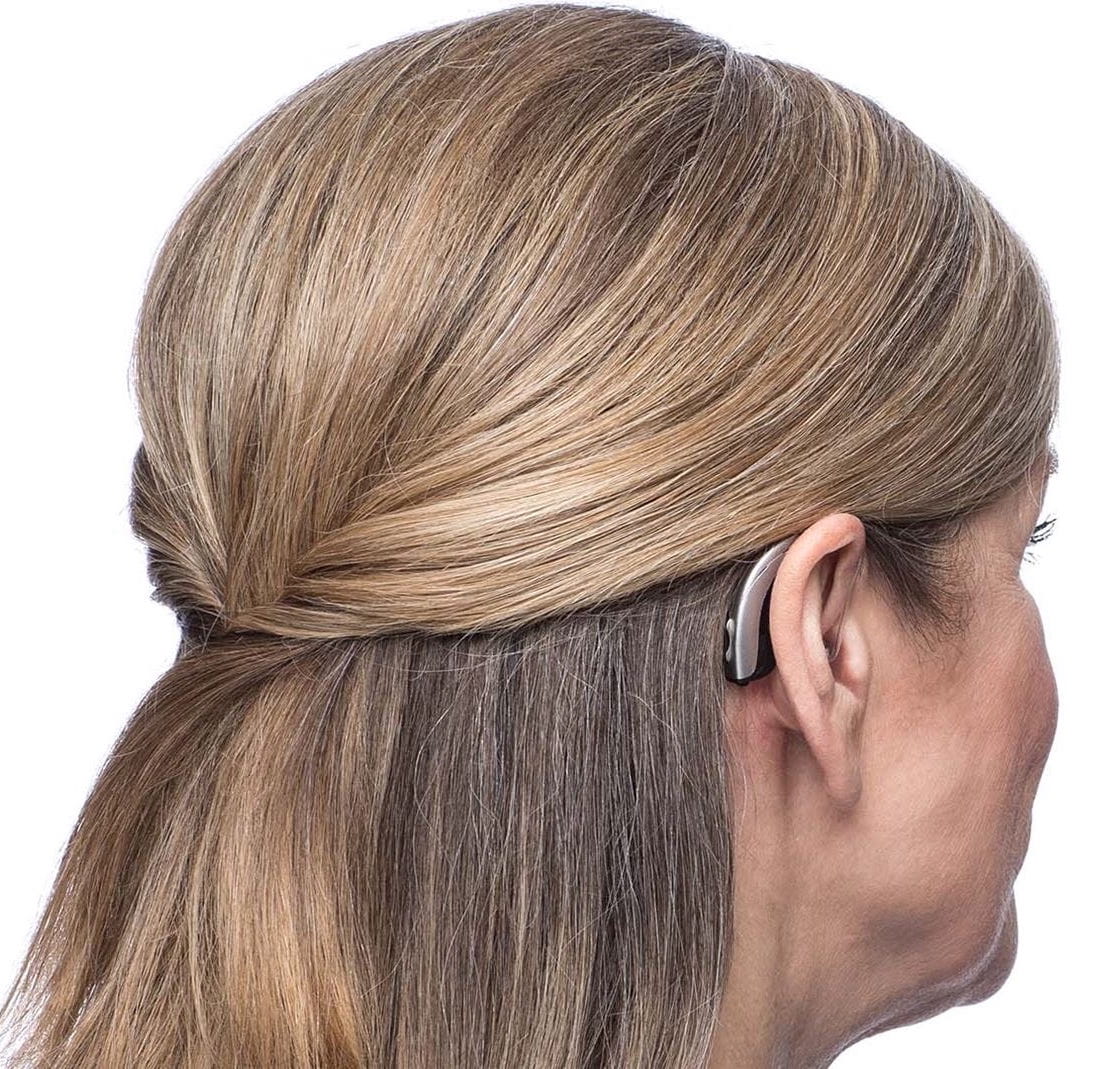
Behind-The-Ear (BTE)
Behind-the-ear hearing aids are the largest type of hearing aid available, making them the most powerful but also the most visible type of device. Their batteries have the longest lifespan of all hearing aids and need to be replaced less frequently. BTE batteries are very powerful and allow these devices to treat all but the most profound levels of hearing loss while giving them the ability to host the majority of available features. They are extremely durable compared to other models. This makes them ideal choices for children, as they are also very easily refitted and programmed, allowing them to grow with their users over time. BTEs can be used to successfully treat all types of hearing impairment.
